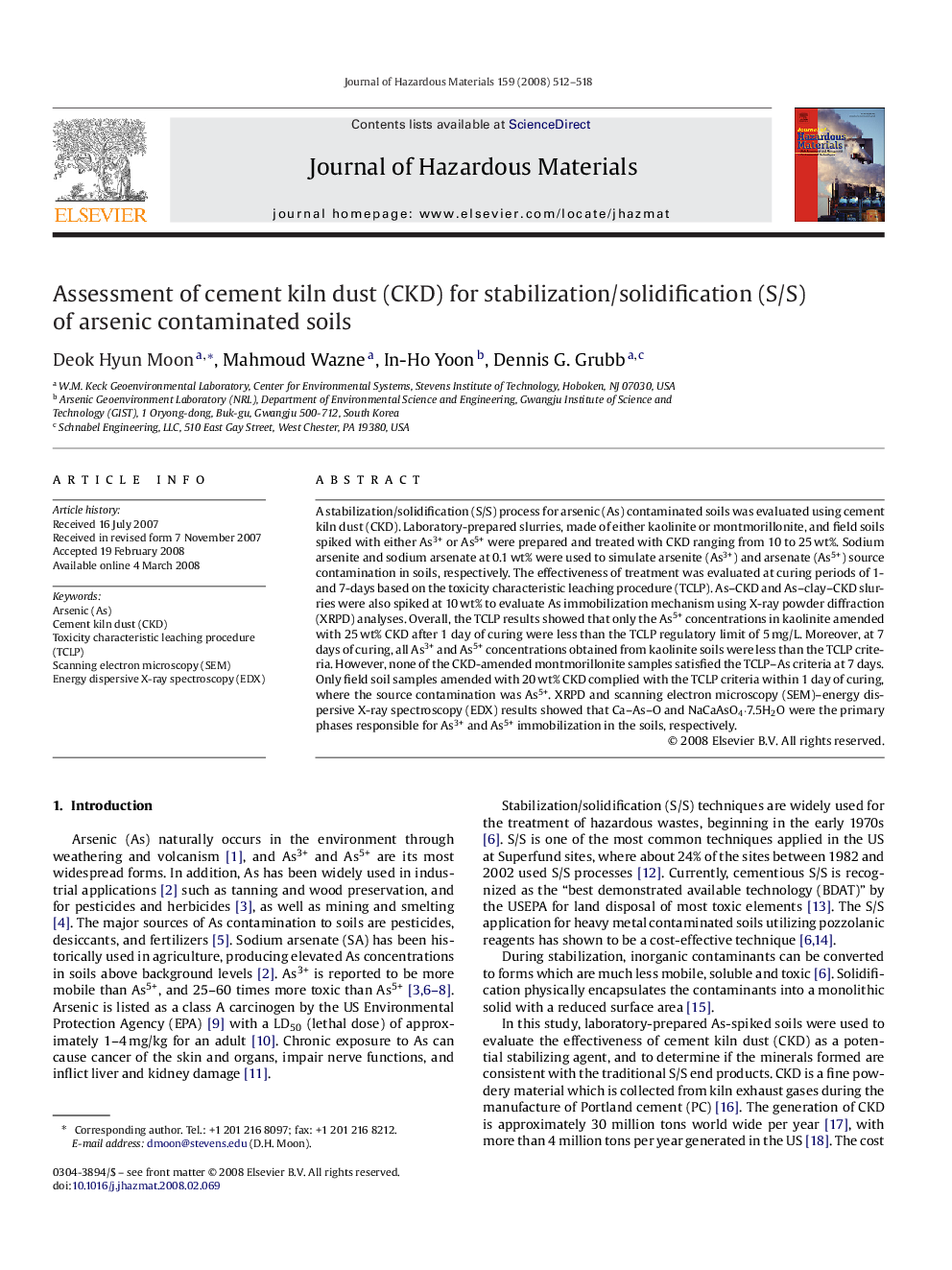| Article ID | Journal | Published Year | Pages | File Type |
|---|---|---|---|---|
| 582998 | Journal of Hazardous Materials | 2008 | 7 Pages |
Abstract
A stabilization/solidification (S/S) process for arsenic (As) contaminated soils was evaluated using cement kiln dust (CKD). Laboratory-prepared slurries, made of either kaolinite or montmorillonite, and field soils spiked with either As3+ or As5+ were prepared and treated with CKD ranging from 10 to 25 wt%. Sodium arsenite and sodium arsenate at 0.1 wt% were used to simulate arsenite (As3+) and arsenate (As5+) source contamination in soils, respectively. The effectiveness of treatment was evaluated at curing periods of 1- and 7-days based on the toxicity characteristic leaching procedure (TCLP). As-CKD and As-clay-CKD slurries were also spiked at 10 wt% to evaluate As immobilization mechanism using X-ray powder diffraction (XRPD) analyses. Overall, the TCLP results showed that only the As5+ concentrations in kaolinite amended with 25 wt% CKD after 1 day of curing were less than the TCLP regulatory limit of 5 mg/L. Moreover, at 7 days of curing, all As3+ and As5+ concentrations obtained from kaolinite soils were less than the TCLP criteria. However, none of the CKD-amended montmorillonite samples satisfied the TCLP-As criteria at 7 days. Only field soil samples amended with 20 wt% CKD complied with the TCLP criteria within 1 day of curing, where the source contamination was As5+. XRPD and scanning electron microscopy (SEM)-energy dispersive X-ray spectroscopy (EDX) results showed that Ca-As-O and NaCaAsO4·7.5H2O were the primary phases responsible for As3+ and As5+ immobilization in the soils, respectively.
Keywords
Related Topics
Physical Sciences and Engineering
Chemical Engineering
Chemical Health and Safety
Authors
Deok Hyun Moon, Mahmoud Wazne, In-Ho Yoon, Dennis G. Grubb,
